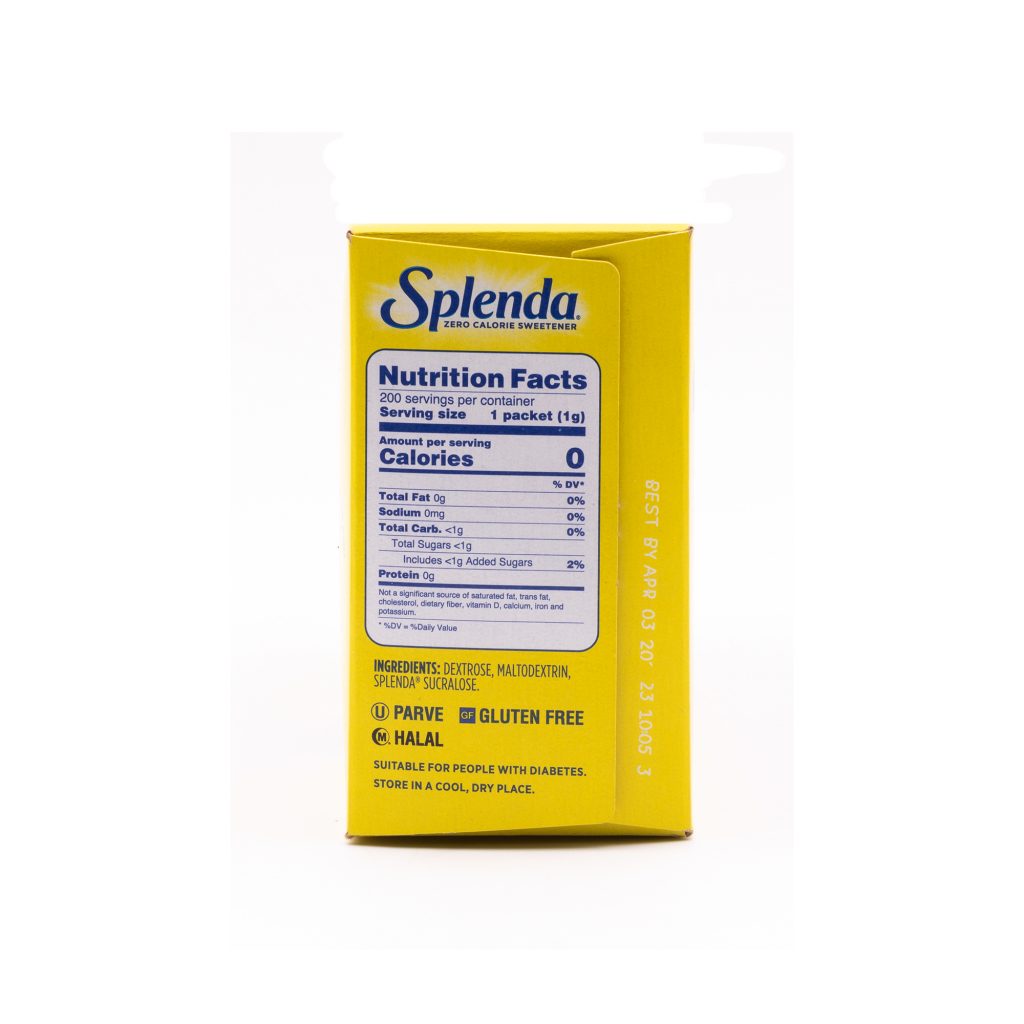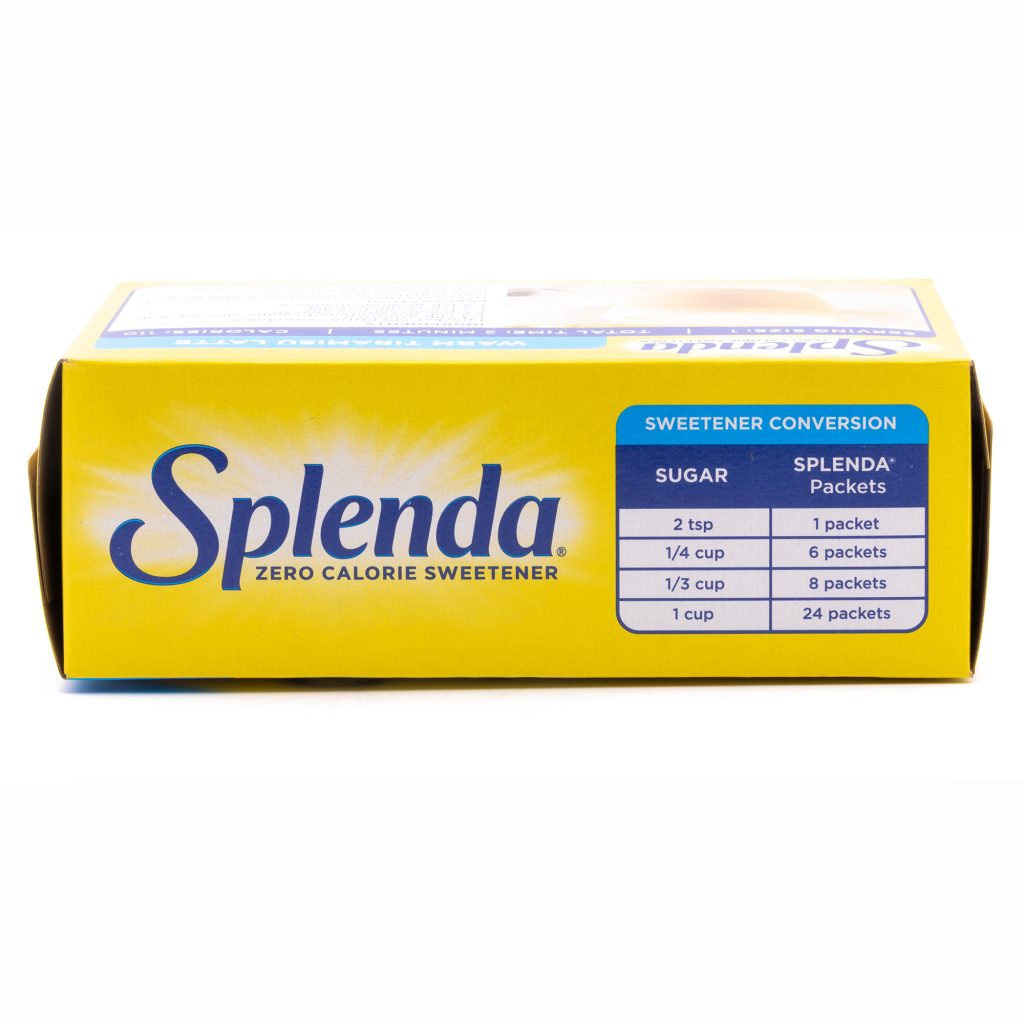Introduction
In contemporary wellness trends, intermittent fasting has become a well-liked strategy for controlling weight and enhancing general health. Intermittent fasting originates in ancient customs and is returning in modern fitness and nutrition circles. It entails alternating periods of eating and fasting. The potential advantages of this regimented eating style, such as weight loss, better metabolic health, and increased longevity, have drawn attention. Intermittent fasting is becoming increasingly popular as a healthy lifestyle option as more people look for practical ways to reach their health goals.
Many use sugar substitutes like Splenda to fulfil their sweet taste and maintain a balanced diet. Splenda, an artificial sweetener made from sucralose, is a tempting choice for people trying to cut back on sugar since it promises sweetness without adding calories. Splenda is a common ingredient in many homes and restaurants and may be found in various food items and drinks. However, there are worries over Splenda’s compatibility with popular dietary regimens like intermittent fasting, given the growing concerns about the health implications of excessive sugar consumption.
People who are new to intermittent fasting frequently come across contradictory information when it comes to using artificial sweeteners like Splenda. Splenda’s potential effects on blood sugar levels and insulin response have drawn criticism from some supporters, who contend that the product might assist in reducing cravings and improve adherence to the fasting protocol. The argument over whether Splenda interferes with intermittent fasting highlights the need for a more thorough comprehension of the drug’s physiological effects and consequences for successful fasting. Investigate the available data and consider ways to include Splenda in an intermittent fasting routine to manage this delicious puzzle properly.
Understanding Splenda
Widely used artificial sweetener Splenda is easily recognizable by its distinctive yellow packet, which has generated criticism and interest. Its roots need to be understood by exploring the field of chemistry. The main component of Splenda, sucrose, is made from sugar by replacing three hydrogen-oxygen groups on the sugar molecule with chlorine atoms in a multi-step process.
With this modification, sucralose becomes over 600 times sweeter than sugar with very few calories, making it a desirable choice for people who want sweetness without the calorie count. Sucralose’s distinct molecular structure also helps explain its stability in various environments, withstanding high temperatures and long shelf life without degrading or losing its sweetness. This scientific conversion of sugar to sucralose highlights the unique ingredients in Splenda and its extensive use in food and drink goods.
The development of Splenda from a lab experiment to a household mainstay illustrates how today’s diet culture is changing. Demand increased for sugar substitutes that may provide sweetness without the negative impacts of calories and possible metabolic side effects as worries about sugar consumption and the health hazards linked with it increased.
With its promise of sugar with no calories, Splenda soon gained popularity and was seen in kitchens, dining areas, and grocery stores worldwide. Its adaptability and broad availability in granulated, liquid, and baking blends have solidified its reputation as the go-to sugar replacement for anyone trying to control their sugar intake or follow particular diet plans like intermittent fasting. But along with its widespread use, concerns about Splenda’s effects on metabolism and health have surfaced, igniting more discussion and investigation among the scientific community.

Even though Splenda has sweetness without calories, its nutritional makeup must be carefully considered to completely comprehend any potential effects on health and fasting habits. In contrast to natural sweeteners like sugar or honey, which are high in calories and carbs, Splenda is almost entirely calorie-free and does not affect insulin response or blood sugar levels.
Because of this feature, it is a good choice for people who occasionally fast because flavor may be enhanced without breaking the fast. Nevertheless, other studies suggest that artificial sweeteners, such as Splenda, may affect gut microbiota composition and metabolic processes, raising concerns about their long-term impact on health and fasting results. People should stay current on the latest study findings in this developing field and consider various criteria when consuming sweeteners during intermittent fasting, including personal tolerance, preferences, and overall dietary habits.
Splenda’s Impact on Blood Sugar and Insulin
The major ingredient in Splenda, sucralose, is widely used, although its effects on metabolism are still up for discussion in the scientific community. While some research indicates that consuming sucrose may change the composition of the gut microbiota and insulin sensitivity, other studies show little to no impact on insulin response or blood sugar levels. It is essential for those who follow intermittent fasting to comprehend these subtleties to make well-informed choices regarding the use of sweeteners.

The methods via which sucralose interacts with the body have been studied recently, providing insight into potential metabolic consequences. More research is necessary to fully understand the degree of sucralose’s effect on metabolic health due to the intricate structure of metabolism and individual heterogeneity.
The possible impact of sucrose consumption on insulin sensitivity, a crucial component of metabolic health and fasting physiology, is one of the main causes of concern. The story is complicated by contradicting data, despite some studies suggesting that artificial sweeteners like sucralose may interfere with insulin signaling pathways and eventually lead to insulin resistance. Study design, participant demographics, and dietary context are some factors that can affect research outcomes and provide inconsistent results.
Because of this, evaluating the corpus of available data necessitates a nuanced approach that considers the constraints and subtleties specific to metabolic research. Keeping these difficulties in mind can assist people who use Splenda in their intermittent fasting regimen to make better meal decisions and achieve better results.
Although scientific research offers a significant understanding of the physiological consequences of sucralose, a more comprehensive understanding of its practical implications for intermittent fasting practitioners is necessary. Beyond its immediate effects on insulin and blood sugar, sucrose consumption may impact dietary choices, taste preferences, and general fasting protocol adherence.
Furthermore, reactions to sweeteners might differ greatly amongst people; some may negatively impact appetite, desires, or gastrointestinal comfort. Therefore, incorporating Splenda into an intermittent fasting plan should consider overall health goals, tolerance levels, and personal preferences. To achieve maximum health and well-being during intermittent fasting, people can effectively negotiate the complicated issues of sugar intake by emphasizing mindful eating and a balanced approach to dietary choices.
The Impact of Splenda on Digestive Health
Regarding gut health, Splenda’s effect on the microbiome is still being closely examined. Splenda is marketed as having no calories, but scientists disagree over how it affects gut flora. According to some research, artificial sweeteners like Splenda may change the makeup of gut flora and upset the delicate balance essential for digestive health. To determine the ramifications of these changes for those who practice intermittent fasting, more research is necessary due to the magnitude and relevance of these changes. Comprehending the subtleties of Splenda’s interactions with the microbiome can enable people to make well-informed decisions about including it in their fasting regimens.
Thoroughly weighing Splenda’s short- and long-term effects on digestive health is necessary when navigating the research environment. While studies conducted over short periods may shed light on immediate consequences, research and discussion on long-term ramifications are still underway. According to some research, artificial sweeteners like Splenda may eventually hurt gut health, resulting in modifications to the makeup of the gut flora and altered metabolic processes. However, contradictory results and methodological flaws highlight the need for care in evaluating study conclusions. People should consider the existing data carefully, considering any potential ambiguities and the state of science as we assess Splenda’s place in intermittent fasting regimens.
Regarding people attempting intermittent fasting and considering using Splenda or other artificial sweeteners, digestive health must come first. Probiotics, prebiotics, and meals high in fiber can help maintain a healthy gut flora and reduce the risk of negative consequences from consuming sweeteners. During fasting periods, frequent physical activity, stress management, and hydration can all help to further support gut health. A holistic approach to wellness includes people listening to their bodies, seeing how different diets affect them, and seeking the advice of medical professionals for individualized treatment. People can maximize their experience with intermittent fasting while lowering the hazards related to sugar consumption by implementing mindful eating practices and prioritizing digestive well-being.
Splenda’s Role in Weight Management
Knowing how Splenda affects appetite regulation is important for intermittent fasting and weight management. Although Splenda is calorie-free, there is an ongoing discussion on its possible effects on hunger and satiety. According to some research, artificial sweeteners like Splenda may interfere with hunger signals, causing people to eat more calories and maybe gain weight. Other studies suggest that eating Splenda does not, in the near term, appreciably alter appetite or food intake. The subtle interaction between Splenda and hunger regulation can help individuals optimize their dietary choices and assist their overall weight management objectives as they traverse intermittent fasting programs.
The process of intermittent fasting becomes more complicated when one considers how research on the connection between Splenda consumption and weight loss should be interpreted. According to some research, artificial sweeteners may make it more difficult to lose weight by increasing appetites or changing metabolic processes. Still, other studies show no discernible effects on body weight. The contradictory nature of these results emphasizes how crucial customized strategies are for managing weight and food choices during intermittent fasting. To effectively support their health and wellness goals, people should focus on complete, nutrient-dense meals and mindful eating practices rather than only depending on artificial sweeteners like Splenda.
For those thinking about including Splenda in their intermittent fasting routine, striking a balance between sweetness and health objectives is crucial. Although Splenda is a calorie-free sugar substitute, one should carefully evaluate its possible impacts on gut health, metabolism, and hunger. To minimize possible hazards and maximize the effectiveness of intermittent fasting, people can experiment with substitute sweeteners like stevia or monk fruit or choose naturally sweet whole foods like fruits in moderation. Moreover, focusing on nutrient-dense meals during eating windows and reducing artificial sweetener usage can help achieve long-term health and weight management goals. Ultimately, achieving sustained wellness gains can be facilitated by adding Splenda into an intermittent fasting program while keeping balance and mindfulness in dietary choices.
Addressing Concerns and Making Informed Choices
It is imperative to consider safety considerations related to Splenda use while assessing its compatibility with intermittent fasting. Although the FDA and other regulatory agencies generally see Splenda, or sucralose, as safe, certain studies have raised concerns about the drug’s possible long-term health impacts. Its effects on insulin sensitivity, gut flora, and general metabolic health are causes for concern. It is important to remember that most of this research has been conducted in vitro or on animals, with only a few human trials demonstrating negative effects. For this reason, people should consider the information and speak with medical experts before deciding how much Splenda to consume while on an intermittent fast.
Additional information regarding the safety concerns related to Splenda and intermittent fasting can be obtained by interpreting regulatory guidelines and recommendations made by health authorities. Sucralose has accepted daily intake levels set by regulatory agencies such as the FDA and EFSA, which deem it safe for human consumption. However, these recommendations might not adequately consider individual variability or potential long-term impacts because they are based on brief studies. Health authorities frequently advise against using artificial sweeteners like Splenda in excess and, instead, stress moderation and balance in diet decisions. Although Splenda is calorie-free, people should use caution and consider its possible effects on their general health and well-being.
The choice to use Splenda in an intermittent fasting regimen should ultimately be tailored to the needs and interests of the individual. While some people could completely abstain from artificial sweeteners, others might discover that Splenda helps them stick to their fasting schedule more beneficially without any negative side effects. When selecting meal decisions during intermittent fasting, it’s critical to consider variables, including taste preferences, nutritional objectives, and general health status. To ensure safety, satisfaction, and long-term success, people can customize their approach to intermittent fasting by trying out various sweets, watching their actions, and consulting medical professionals.
Does Splenda Break Intermittent Fasting?
Yes, according to various fasting experts, Splenda breaks a fast, as it can stimulate digestive processes and trigger insulin secretion. While sucralose is calorie-free, Splenda contains additional ingredients like dextrose and maltodextrin, which have a higher glycemic index than table sugar and can spike blood sugar levels, disrupting a fasted state.
Sucralose, the main component of Splenda, may not have calories alone, but its additives can lead to a significant glycemic and insulin response. This response can counteract the benefits of intermittent fasting, particularly if the goal is to optimize metabolic health or achieve autophagy. Thus, despite being a non-caloric sweetener, Splenda should be avoided during fasting periods to maintain the integrity of the fast.
Natural sweeteners like stevia, monk fruit, and allulose offer viable options for those seeking alternatives to Splenda while fasting. These sweeteners have minimal impact on blood sugar and insulin levels, making them suitable for individuals adhering to intermittent fasting protocols. However, carefully choosing sweeteners and considering individual goals and potential metabolic responses is essential to preserve the fasting state effectively.
FAQ about Splenda and Intermittent Fasting
Q: Can I have Splenda while intermittent fasting?
A: While Splenda is commonly used as a low-calorie sweetener, it’s best to avoid it during intermittent fasting. Splenda contains additives like dextrose and maltodextrin, which can spike blood sugar levels and stimulate insulin secretion, potentially breaking the fasted state.
Q: What sweetener can you use during intermittent fasting?
A: Stevia, monk fruit, and allulose are recommended sweeteners for intermittent fasting. These natural alternatives have minimal impact on blood sugar and insulin levels, making them suitable options to maintain the fasting state.
Q: Does Splenda break ketosis?
A: Splenda, particularly in the form of granulated sweetener, may contain ingredients that can disrupt ketosis due to their effect on blood sugar and insulin levels.
Q: Does Splenda spike insulin?
A: Yes, Splenda can spike insulin levels due to the additives like dextrose and maltodextrin it contains, which can trigger an insulin response in the body.
Q: Does Splenda affect fasting glucose?
A: Splenda can affect fasting glucose levels by causing blood sugar spikes, especially when consumed in larger quantities.
Q: Is Splenda zero calories?
A: While sucralose itself is calorie-free, Splenda as a product may contain trace calories from its additives, such as dextrose and maltodextrin.
Q: Does Splenda stop weight loss?
A: Consuming Splenda during intermittent fasting can hinder weight loss due to its impact on insulin levels and metabolic processes.
Q: Will 1g of sugar break a fast?
A: Consuming even small amounts of sugar, such as 1g, can disrupt the fasting state by triggering an insulin response and affecting metabolic processes.
Q: Does Splenda stop autophagy?
A: While there is limited research specifically on Splenda and autophagy, the spike in insulin caused by Splenda consumption may interfere with autophagy, the cellular recycling process.
Q: Can I put Splenda in my coffee while intermittent fasting?
A: It’s advisable to avoid adding Splenda to coffee during intermittent fasting to maintain the fasted state and maximize its potential benefits.
Q: Is stevia better than Splenda?
A: Stevia is often considered a better option than Splenda for intermittent fasting due to its minimal impact on blood sugar and insulin levels.
Conclusion
In conclusion, the evidence presented strongly indicates that Splenda breaks a fast, primarily due to its impact on insulin levels and blood glucose response. Although sucralose might not immediately break a fast, Splenda’s other constituents, such as maltodextrin and dextrose, can cause the body to react with insulin and the gastrointestinal tract, breaking the fast. This emphasizes the importance of comprehending sweeteners’ constituent parts and how they affect metabolism when including them in intermittent fasting regimens.
Furthermore, Splenda has substitutes that are better suited to fasting customs. For example, stevia is a good option for fasting for gut health or weight loss because it has advantages, including decreased blood glucose response and enhanced insulin sensitivity. Furthermore, erythritol, xylitol, monk fruit, and allulose offer feasible options with differing metabolic consequences, enabling people to customize their sweetener selections to their fasting objectives and preferences.
In conclusion, even though the pros and downsides of using sweets like Splenda during intermittent fasting are still up for dispute, people must take into account how these substances affect their metabolism and how that may affect the results of their fast. Through educated decision-making and the selection of sweeteners that complement fasting goals, people can confidently navigate the sweetener landscape and maintain optimal fasting practices for metabolic health and general well-being.
Reference
(1) The Impact of Artificial Sweeteners on Body Weight Control and Glucose Homeostasis
https://www.ncbi.nlm.nih.gov/pmc/articles/PMC7817779/
(2) Effects of Sweeteners on the Gut Microbiota: A Review of Experimental Studies and Clinical Trials
https://www.ncbi.nlm.nih.gov/pmc/articles/PMC6363527/
(3) 10 Alternatives to Refined Sugar – Healthline
https://www.healthline.com/nutrition/natural-sugar-substitutes
(4) Additional Information about High-Intensity Sweeteners Permitted for Use in Food in the United States
https://www.fda.gov/food/food-additives-petitions/additional-information-about-high-intensity-sweeteners-permitted-use-food-united-states
(5) Splenda: Is it safe? – Medical News Today
https://www.medicalnewstoday.com/articles/262475
Was this helpful?

Joseph Emb, RDN
Founder of StyleVitally.com | Registered Dietitian & Wellness Advocate
What I Cover:
I’m passionate about connecting nutrition science and everyday wellness to help people live healthier, more vibrant lives. I write about evidence-based nutrition, mindful eating, sustainable lifestyles, and holistic well-being at StyleVitally.com.
My Background:
The University of Texas in Austin, where I earned my Dietetics diploma, laid the groundwork for my nutrition and health career. My training and hands-on experience taught me the science and art of using nutrition to enhance health and well-being.
Professional Journey:
I’m an RDN with lots of experience. I’ve helped people seeking tailored nutritional recommendations in clinical settings and community outreach programs. My constant learning and professional development ensure that my recommendations are always based on the latest evidence.
Ethical Commitment:
My practice prioritizes integrity. My content is transparent and objective, following the most significant ethical standards. I can give my audience unbiased advice because I’m not affiliated with food businesses or industry associations. I want to help people make informed health decisions that match their values and ambitions.
Join Me on the Wellness Journey:
Join me on the path to vitality and well-being, whether facing nutritional issues, seeking sustainable lifestyle changes, or simply wanting a better, happier you. We’ll discover how diet, mindfulness, and holistic well-being can maximize your potential.









